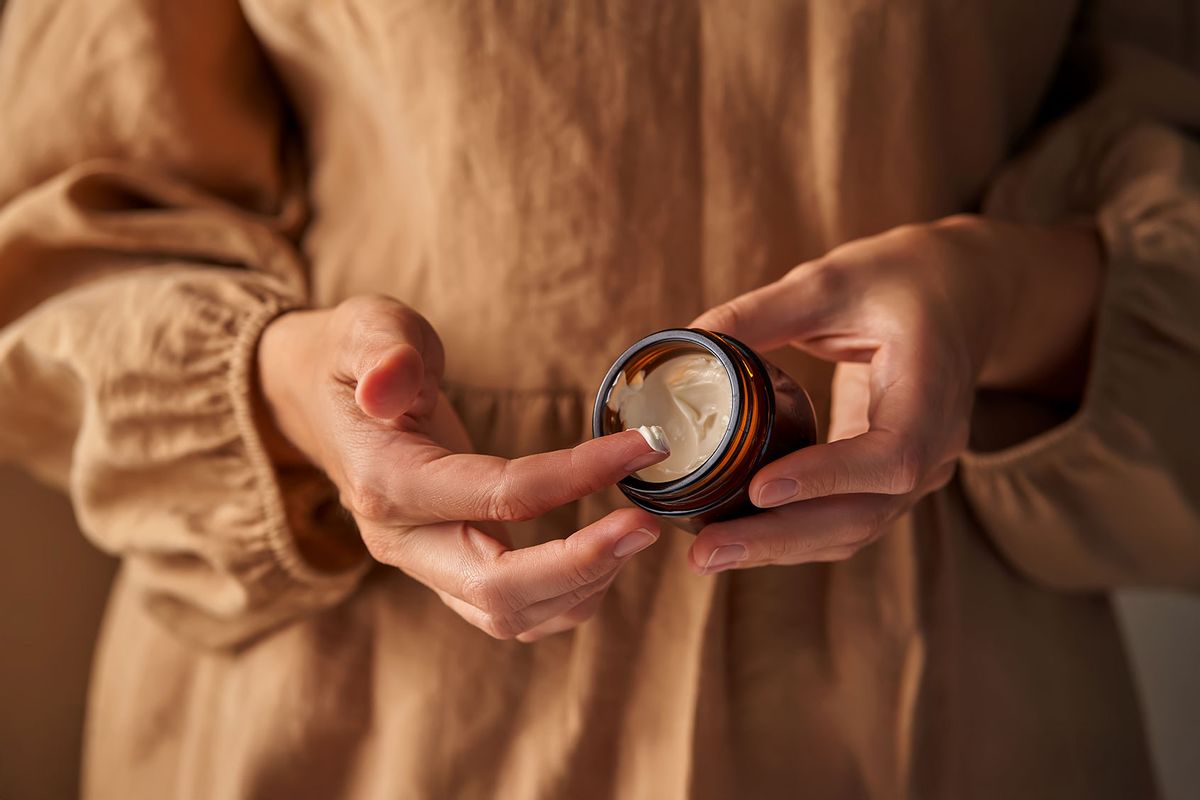Even amid its legal and regulatory troubles, TikTok spurred a slew of skincare trends that promised tangible results, albeit with questionable methods. There’s the Kim Kardashian-approved salmon-sperm facial — which is exactly what its name suggests. The anti-aging beauty treatment involves injecting a DNA component extracted from salmon semen into the skin to stimulate new collagen production and achieve a more hydrated, plump look. There’s also the grotesque poo facial, which went viral after one influencer smeared feces on her face.
Such hacks underscore the great lengths people will go for a clear, glowing complexion. Kardashian herself told The New York Times in 2022, “If you told me that I literally had to eat poop every single day and I would look younger, I might.”The internet’s latest skincare craze doesn’t involve animal ejaculate or fecal matter, thankfully — but it’s still eyebrow-raising, to say the least.
Skinfluencers have turned their attention to beef tallow, a rendered form of beef or mutton suet typically used in cooking. Those who swear by the ingredient say it’s a natural moisturizer with several benefits, including fighting acne — asserting it has anti-inflammatory properties — and protecting the skin barrier to lock in hydration.
“Many advocates of this trend believe that beef tallow is rich in nutrients like vitamins A, D, E and K, which are beneficial for skin health,” Dr. Hannah Kopelman, a dermatologist at Kopelman Aesthetic Surgery, told Healthline. Beef tallow is balmy in consistency and similar in texture to softened butter or lard. It also closely resembles sebum, the oily substance that coats our skin and protects it from drying out.
According to dermatologists and skincare experts alike, there’s very little scientific and clinical research to back up the claim that beef tallow is beneficial to use on our skin. Tallow is not currently FDA-approved for topical use and may come with risks, especially if it’s sourced from cows with certain health conditions and diseases, like mad cow disease. As of recently, a multistate outbreak of Highly Pathogenic Avian Influenza (H5N1), better known as bird flu, continues to impact dairy cows nationwide. The Centers for Disease Control and Prevention (CDC) reported that 66 cases of bird flu in humans have been confirmed nationwide. Approximately two-thirds of those cases were linked to dairy herds.
Many people who use unprocessed beef tallow on their skin say they get it from their local butcher shops. Others purchase grass-fed beef tallow from their local grocery stores. Some incorporate tallow with other emollient ingredients to make their own natural moisturizer. Nara Smith, for example, calls for beef tallow and beeswax in a recipe for her homemade moisturizer.
“I appreciate the effort to use more naturally sourced ingredients, but given the lack of regulated sourcing, processing, and stability of the tallow, as well as the comedogenic properties of using tallow, I would recommend other methods of hydration,” Dr. Maya Thosani, a double board-certified dermatologist, told Allure.
We need your help to stay independent
Beef tallow is highly comedogenic, meaning it can clog pores and worsen acne — despite claims from users who say it’s a powerful ingredient to combat active breakouts. Vogue columnist Daisy Jones wrote about her experience using beef tallow for a week. By day six, Jones said she “developed the sort of comedonal acne that I haven’t had since my early twenties and my cheeks had begun to actually feel a little inflamed.”
Want more great food writing and recipes? Subscribe to Salon Food's newsletter, The Bite.
“Every time I tried to treat one spot, a new one burst forth in its wake like some kind of nightmarish game of whack-a-mole,” she added. “There was only one thing for it: I had to throw this stuff away. Even looking at it was giving me pimples. I chucked it in the trash, relieved it was no longer in my house or part of my routine.”
Like many trendy skincare ingredients, beef tallow isn’t the perfect solution for everyone. Those with sensitive, acne-prone or oily skin may find tallow to be especially irritating. However, dermatologists say people with eczema-prone or extremely dry skin can try using small amounts of the ingredient on their elbows, knees and hands.
It’s also worth noting that beef tallow has a rather meaty scent that can be quite off-putting. If you’re not keen on slathering animal fat all over your face and reeking of beef, there are a few alternatives that promise similar results and smell much better. Shea butter is rich in fatty acids, vitamins and antioxidants to help boost skin moisture. Same with coconut oil, which has antibacterial properties that could help reduce dark spots and tighten skin.



Shares